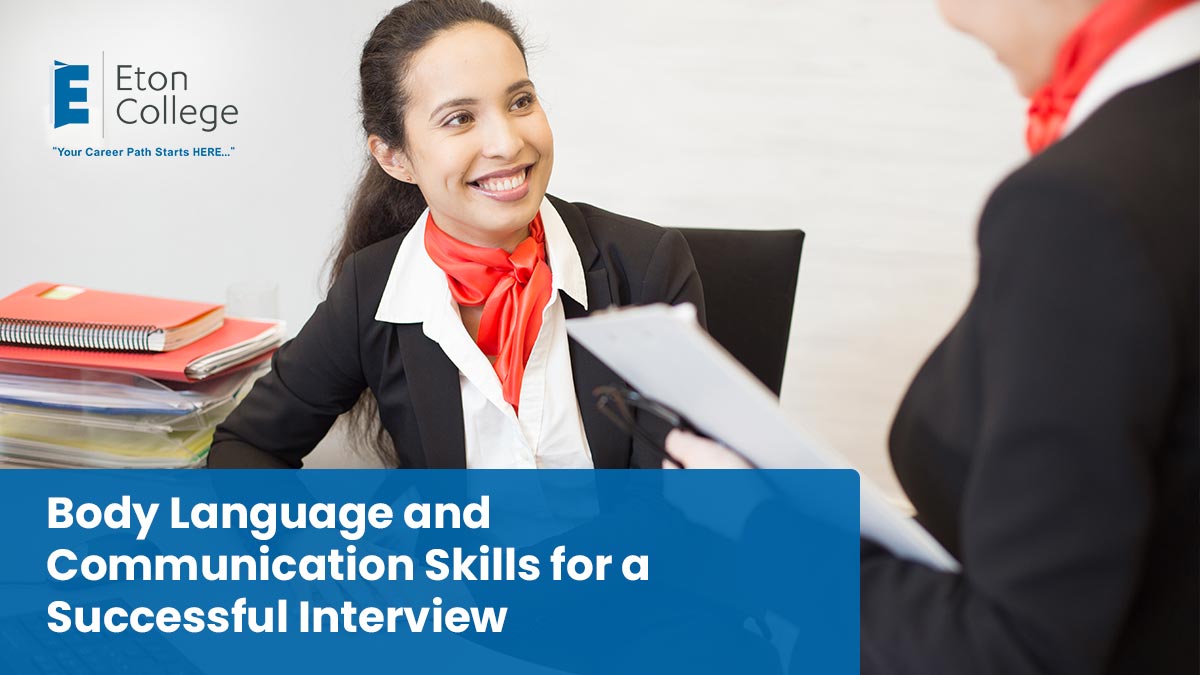- Recruiters form opinions within seconds, so strong body language, including good posture and a welcoming smile, is essential in a flight attendant interview.
- Maintaining consistent, friendly eye contact during a flight attendant interview conveys confidence and engagement, which is crucial for passenger interactions.
- Smiling naturally throughout the interview reflects positivity and approachability, two important traits airlines look for in candidates.
- Use natural, minimal hand gestures to emphasize key points, showing honesty and openness without overdoing it.
- Speak clearly and confidently in a flight attendant interview to demonstrate effective communication skills, a key part of the role.
Preparing for a flight attendant interview involves more than just answering questions about your qualifications and experience. The way you present yourself through body language and communication skills can make or break your chances of landing the job. Airlines prioritize candidates who not only have the necessary skills but can also demonstrate confidence, professionalism, and approachability.
In this blog, we’ll explore how to master your body language and communication techniques to excel in your flight attendant interview.
1. First Impressions Matter
The first few moments of a flight attendant interview can set the tone for the rest of the interaction. Recruiters often form opinions within the first few seconds of meeting you, so making a great first impression is crucial.
Body language plays a significant role in this, as it helps convey confidence and professionalism. When you enter the interview room, stand tall with your shoulders back and maintain good posture. A firm handshake, accompanied by a friendly smile, can communicate confidence and a welcoming demeanor.
As flight attendants are often the face of the airline, airlines look for candidates who can project warmth and approachability. Maintaining an open stance—without crossing your arms or slouching—demonstrates that you are open to communication and are engaged in the conversation.
2. Eye Contact: The Key to Engagement
Maintaining consistent eye contact is essential during a flight attendant interview. Eye contact demonstrates that you are engaged, confident, and respectful.
When answering questions, make sure to look at the interviewer while speaking. However, be careful not to stare, as this can come across as intimidating. Instead, maintain a natural balance by briefly shifting your gaze when needed but always returning to direct eye contact.
Additionally, eye contact plays a crucial role in non-verbal communication. Flight attendants need to connect with passengers in a warm and approachable way, which requires confident eye contact. During your flight attendant interview, eye contact will show the recruiters that you are ready to interact with passengers from diverse backgrounds in a friendly and attentive manner.
3. Smile: Project Warmth and Positivity
A flight attendant’s role is customer-facing, meaning that candidates must exude positivity and warmth. Smiling is an easy yet powerful tool that can instantly create a positive atmosphere during your flight attendant interview. A genuine smile shows that you’re approachable, friendly, and ready to engage with passengers and crew alike.
When answering questions, especially those about customer service or teamwork, smile naturally to emphasize your willingness to assist others. Smiling also helps ease tension and creates a more comfortable environment for both you and the interviewer.
4. Hand Gestures: Natural and Controlled
While hand gestures can enhance communication, it’s essential to use them in a controlled and natural way. Overly exaggerated gestures may come across as distracting or unprofessional during a flight attendant interview. Instead, use your hands to reinforce your points but keep the movements minimal and smooth.
When discussing experiences or answering behavioral questions, subtle hand gestures can help emphasize key points. For example, using open palms suggests honesty and openness, which are qualities airlines value in flight attendants. However, avoid fidgeting with objects or crossing your arms, as these habits can signal nervousness or disinterest.
5. Tone of Voice: Be Clear and Confident
Your tone of voice plays a vital role in how your communication is perceived during a flight attendant interview. Speaking too softly can indicate a lack of confidence, while speaking too loudly can be overwhelming. Aim to speak at a clear and moderate volume to ensure that you are easily understood.
Confidence is key, so avoid speaking in a monotone or rushed manner. Pausing to collect your thoughts before answering questions can help prevent nervous speech patterns like “um” or “uh.” Additionally, varying your tone to reflect enthusiasm and interest in the role can leave a lasting impression on recruiters.
Flight attendants are expected to communicate clearly with passengers in all types of situations, from delivering safety instructions to addressing customer concerns. Therefore, demonstrating a confident tone in your interview is crucial.
6. Listening Skills: Be Attentive and Responsive
Communication is a two-way street, and active listening is just as important as speaking. During a flight attendant interview, it’s essential to listen carefully to the interviewer’s questions and comments. Nodding occasionally while maintaining eye contact shows that you are engaged and processing the information.
When answering questions, take a moment to reflect on what was asked, ensuring that your response is relevant and well thought out. Interrupting the interviewer or giving unrelated answers can create a negative impression.
Being an attentive listener is crucial for flight attendants, as they need to respond to passengers’ requests and concerns effectively. Show that you possess this skill by giving thoughtful responses during your interview.
End on a Positive Note
The conclusion of your flight attendant interview is your chance to leave a lasting impression. Maintain eye contact, offer a firm handshake, and express gratitude for the opportunity. A final smile, along with a positive remark such as “Thank you for considering me, I’m excited about the opportunity,” can show your enthusiasm for the role.
For aspiring flight attendants, mastering body language and communication skills is key to acing the flight attendant interview. Proper preparation can make all the difference, and Eton College offers a comprehensive Flight Attendant Preparation Program. This program equips students with the essential skills, including communication techniques, customer service training, and safety procedures, ensuring that you’re fully prepared for your flight attendant interview and a rewarding career in the aviation industry.




